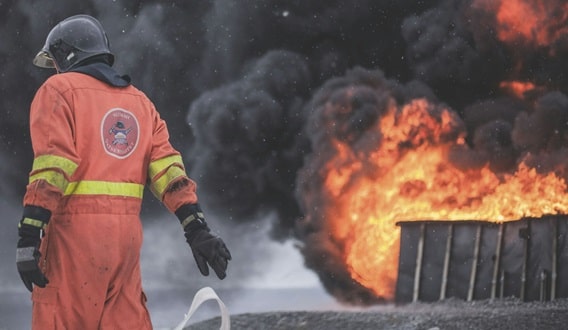Recently, there has been an ongoing buzz about AFFF (Aqueous Film Forming Foam) lawsuits. This foam enables firefighters to extinguish fuel-based fires to save people’s lives. Even though the foam is effective in dissolving fire flames, it's toxic enough to affect firefighters’ health. And that’s why most exposed to this foam have been filing AFFF lawsuits.
In September 2021, AboutLawsuits.com reported about Michael Sloane, a former U.S. Navy firefighter from Texas, who developed testicular cancer because of AFFF exposure for years. In his complaint, he mentioned that PFAS (per and polyfluoroalkyl substances) found in firefighter foam led to his cancer diagnosis.

PFAS compounds are commonly termed ‘forever chemicals’ that bioaccumulate in the environment and the body, causing severe ailments among former firefighters. The list of ailments includes testicular, prostate, pancreatic, kidney, and other kinds of cancer for which firefighters have filed lawsuits.
Are you thinking of filing an AFFF lawsuit? If so, this article will discuss the factors to consider.
Michael Sloane, with his AFFF lawsuit for Navy personnel, is among the hundreds of similar plaintiffs who filed a legal complaint after being affected by the toxic firefighter foam. The exposure might have occurred during response or training exercises.
Today, prominent health organizations such as the CDC (U.S. Centers for Disease Control and Prevention), the EPA (U.S. Environmental Protection Agency), and the ACS (American Cancer Society) have recognized the connection between PFAS chemicals and cancer and other ailments in military firefighters.
Other than ulcerative colitis and thyroid disease, PFAS exposure can result in multiple kinds of cancer, including:
Have you been diagnosed with any of these cancers after getting exposed to AFFF at work? If so, then chances are you are eligible to file a lawsuit to seek financial compensation for all your medical costs incurred.
Firefighting foam lawsuits have been filed by people who have suffered from AFFF exposure because of their occupation. That aside, individuals who have been affected by PFAS chemicals present in drinking water close to a region where this foam was used daily can also file a legal claim.
You can file a complaint if you or your loved one:
So, you have all the medical documents and healthcare data that establish AFFF exposure as the cause of your cancer or ailment. Chances are you would now want to file a lawsuit and ask for the compensation you deserve. Here the million-dollar question pops up–do you need to join hands with an expert lawyer? The answer is a resounding yes.
Filing an AFFF lawsuit and waiting for the compensation to come through is not a simple process. There are delays and legal implications involved, and as a layperson, you will not have the know-how and wisdom to navigate the legal scene.
TruLaw suggests it is a smart call to get in touch with a lawyer for the correct guidance. They will have a clear understanding of your case and will collect the necessary evidence to support the claim. An expert lawyer will help with the following:
Lawyers also let you know your settlement payout amount. Typically, it can vary anywhere between $10,000 and $300,000 based on the claim strength, medical issues suffered, and exposure level.
According to the March 2024 update on firefighter foam lawsuits, 176 new cases were added to the MDL. To date, there are more than 7,000 pending cases. However, several cases of water contamination were resolved last summer. Hence, you must file your lawsuit, as there is hope of receiving the compensation you deserve.
In conclusion, military and firefighting units must make use of fluorine-free fire extinguishing foam, which will help reduce the side effects as much as possible. However, if you have suffered from AFFF exposure and have developed cancer or any other chronic ailment, you need to file a lawsuit. When you do so, you need to consider the factors that have been discussed here, from knowing the list of ailments covered to the role of a lawyer.